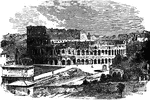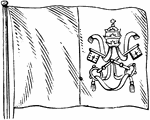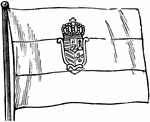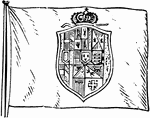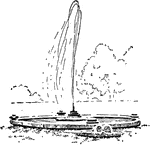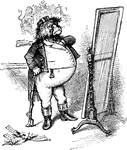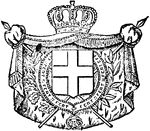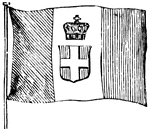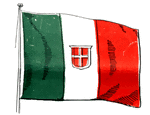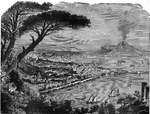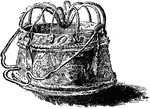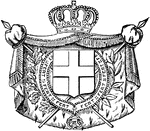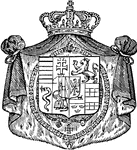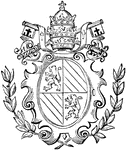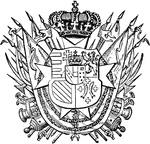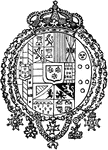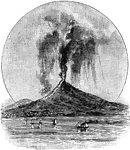Italy Miscellaneous
The Italy Miscellaneous ClipArt gallery offers 60 illustrations of everyday life in Italy, historic costume, places, building details, landscapes, cityscapes, documents, and other illustrations related to Italy and the Holy See.
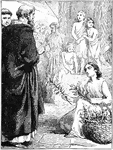
The Angli in Rome
The Angles is a modern English word for a Germanic-speaking people who took their name from the cultural…
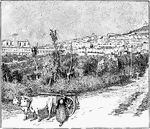
City of Assisi
Assisi is a town in Italy in province of Perugia, Italy, in the Umbria region, on the western flank…
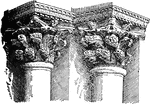
Byzantine Capitals
An illustration of a Byzantine capital from the central portal of St. Mark's Venice. In several traditions…
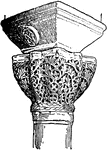
Byzantine Capitals
An illustration of a Byzantine capital from the the Church of St. Vitale, Ravenna. In several traditions…
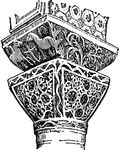
Byzantine Capitals
An illustration of a Byzantine capital from the the Church of St. Vitale, Ravenna. In several traditions…
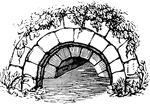
Cloaca
"A sewer, a drain. Rome was intersected by numerous sewers, some of which were of an immense size: the…
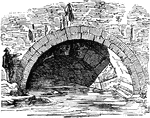
The Cloaca Maxima at Rome
In these Etruscan buildings traces are to be found of the arch; as, for instance, in the Gate of Volterra…
Copper Gilt
"Monstrance of Copper Gilt; Italian work of the 15th century." —The Encyclopedia Britannica, 1903

Etruscan Jug
This jug has a handle which is sculpted higher than the jug itself. A woman's face is seen near the…
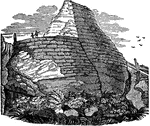
Fault in Terranuova
Fault in the round tower of Terranuova in Calabria occasioned by the earthquake of 1783.

Frate della Misericordia
"A Frate della Misericordia. MISERICORDIA, the name of a society (of laymen) in Florence, founded in…

Pompeiian House
"House construction consists mainly of concrete or brick, and sometimes of stone blocks, especially…
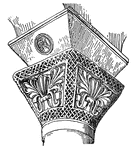
Impost Cap
Impost cap from St. Vitale. The impost cap (or impost-block) was interposed between the capital and…
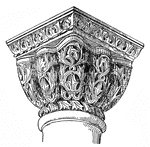
Impost Cap
Basket cap from St. Apollinare Nuovo, Ravenna. When an impost cap has extensive lacey or basket-like…

Flag of Italy, 2009
Black and white outline flag of Italy. Three equal vertical bands of green (hoist side), white, and…

Flag of Italy, 2009
Color flag of Italy. Three equal vertical bands of green (hoist side), white, and red; similar to the…
!["The main essentials in all the Roccoco Styles are a certain independence in the ornamentation of the main architectural organism, the prominence of this ornamentation itself, and finally its shape and design. A luxurious elegance is displayed in the treatment of interiors, which was most happily employed in the embellishment of the state apartments. [This image] gives an example of the absence of connection among the various ornaments employed in the system of decoration, such as was especially peculiar to the churches of the Jesuits."](https://etc.usf.edu/clipart/73700/73792/73792_jesuit_churc_mth.gif)
Jesuit Church, Rome
"The main essentials in all the Roccoco Styles are a certain independence in the ornamentation of the…

Iron Crown of Lombardy
"The Iron Crown was a golden crown, set with precious stones, with which anciently the kings of Italy,…

Cast of a Body Found at Pompeii
"The bodies of those who perished were buried under layers of fine pumice stones and ashes. When plaster…

Surgical Instruments from Pompeii
Illustrations of various surgical instruments used in Pompeii, Italy.
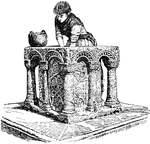
Pozzo
One of the curbs or heads of the cisterns which are filled with water from the neighboring mainland.
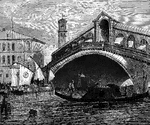
Rialto Bridge and Gondolas
Gondoliers maneuver their craft under the Rialto Bridge in Venice, Italy. The Rialto is the oldest of…
!["The decoration of the interiors of the buildings of the Renaissance is also copied from ancient Roman architecture. The rooms are either vaulted or have flat ceilings, but in both cases are adorned with paintings after the manner of those discovered in the Baths of Titus, as is shown in [this image], or by panel-work, that is, sunken coffers with a regularly distributed enrichment. These panels are themselves often adorned with historical or allegorical paintings, or with arabesques. Ornamented panels were employed in large palaces for horizontal ceilings, as also in churches, though in the latter case they were more often applied to cupola vaulting, as notable in St. Peter's."](https://etc.usf.edu/clipart/73700/73707/73707_florentine_mth.gif)
Painted Vault of the Florentine Palace in Rome
"The decoration of the interiors of the buildings of the Renaissance is also copied from ancient Roman…

General View of Rome
Rome is the capital city of Italy and Lazio, and is Italy's largest and most populous city, with more…

The Room in which Turner Died
The artist is unknown for this drawing. The picture is of the room in which Turner was found months…
Simplon Massif
Section through the Simplon massif, along the axis of the Great Simplon tunnel from the Rhone Valley,…

Bodily Strength and Skill
This bodily strength and skill sport was part of the Venetian games during the Middle Ages. It shows…

State Barge of Venice
The state barge of Venice, which was used in the ceremony of "Wedding the Adriatic."—Myers, 1905

A Vestal Virgin
"Portrait from a statue discovered in the ruins of the Temple of Vesta in the Roman Forum."—Webster,…

